The United States Economy in 2025: Between Momentum and Malaise
An in-depth, fact-based comparison of Trump’s 2025 economy and Biden’s 2021–2024 performance.
Introduction: Two Economies, Two Realities
The American economy in 2025 sits at a strange crossroads. On paper, the numbers look resilient—growth remains positive, inflation appears contained, and stock markets are breaking records. Yet the mood across much of the country tells a different story: hiring has slowed, confidence has cracked, and the cost of living still strains everyday households. It’s a split-screen economy—Wall Street smiles while Main Street sighs.
To understand how we arrived here, it’s essential to compare the economy under President Donald Trump’s second term (beginning January 2025) with the full four-year performance under President Joe Biden (2021–2024). Both administrations navigated vastly different environments: Biden’s era was defined by recovery from the pandemic shock, record job creation, and a bruising battle against runaway inflation; Trump’s return has focused on reviving industrial output, cutting taxes, and using tariffs as a lever of both economic and political strategy.
Across six key indicators—GDP growth, inflation, employment, consumer confidence, stock market performance, and federal debt—this analysis dissects what’s working, what’s faltering, and what these trends reveal about America’s economic direction.
GDP Growth: From Post-Pandemic Boom to Policy-Induced Volatility
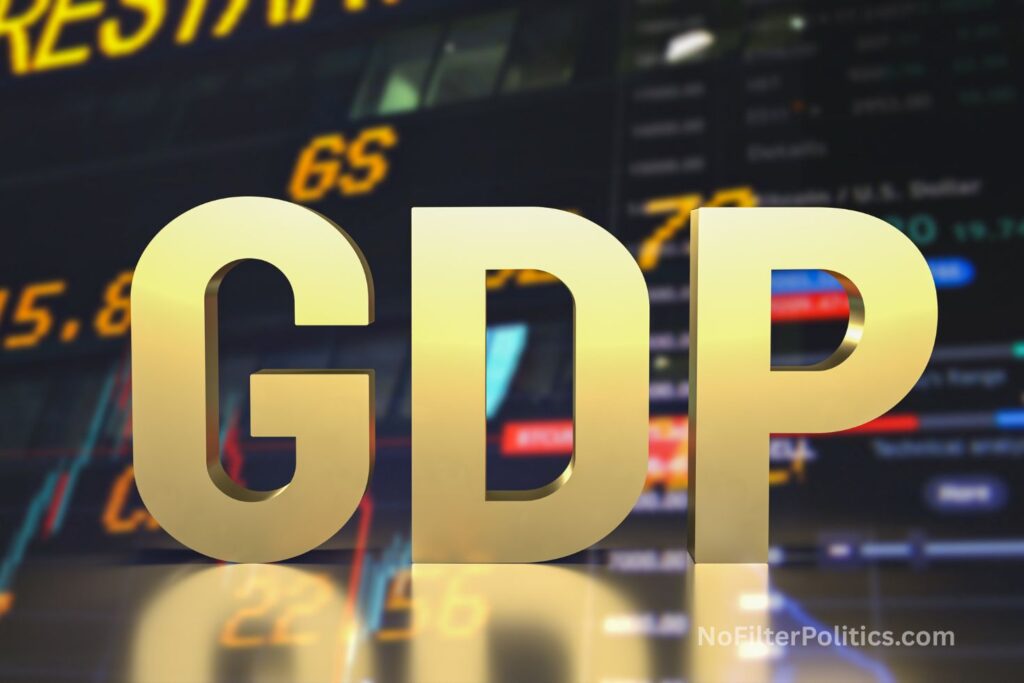
Under President Biden, the U.S. economy experienced one of the fastest recoveries in modern history. Real GDP grew by 6.2% in 2021 as the country reopened, fueled by massive fiscal stimulus and consumer demand unleashed after pandemic lockdowns. Growth cooled but remained solid—2.9% in 2023 and 2.8% in 2024—marking four consecutive years of expansion that pushed the economy beyond its pre-pandemic trajectory. By late 2024, real output had not only recovered but surpassed potential GDP, with U.S. growth outpacing other G7 nations.
Biden’s economic momentum rested on large-scale government investment. The American Rescue Plan, the Infrastructure Investment and Jobs Act, and the CHIPS and Science Act poured trillions into the economy. Manufacturing construction boomed, corporate earnings surged, and job openings hit historic highs. Critics argued the stimulus was excessive, but the net result was clear: the United States avoided a prolonged post-pandemic slump and delivered consistent output growth.
By contrast, the Trump 2025 economy began with a stumble. In the first quarter, real GDP contracted by 0.6%—a modest dip attributed to businesses pulling back investment and consumers rushing to import goods ahead of impending tariffs. The second quarter rebounded sharply at 3.8% annualized growth, driven largely by a fall in imports and resilient consumer spending. Third-quarter projections suggest continued, though slower, expansion in the 2–3% range.
On the surface, Trump’s first year of his second term appears stable, but beneath that surface, growth has become more uneven. Much of the 2025 rebound reflects accounting quirks rather than broad-based economic vigor. Imports declined because tariffs made foreign goods costlier, mathematically boosting GDP, while business investment and exports softened due to trade uncertainty.
In short, Biden’s growth was steady and demand-driven. Trump’s growth, so far, is patchy and policy-driven. The United States has avoided recession, but volatility has replaced predictability. The key question heading into 2026 is whether Trump’s tax cuts and industrial incentives will revive private investment—or whether his tariffs will weigh down global supply chains and domestic production alike.
Inflation: From Firestorm to Controlled Burn
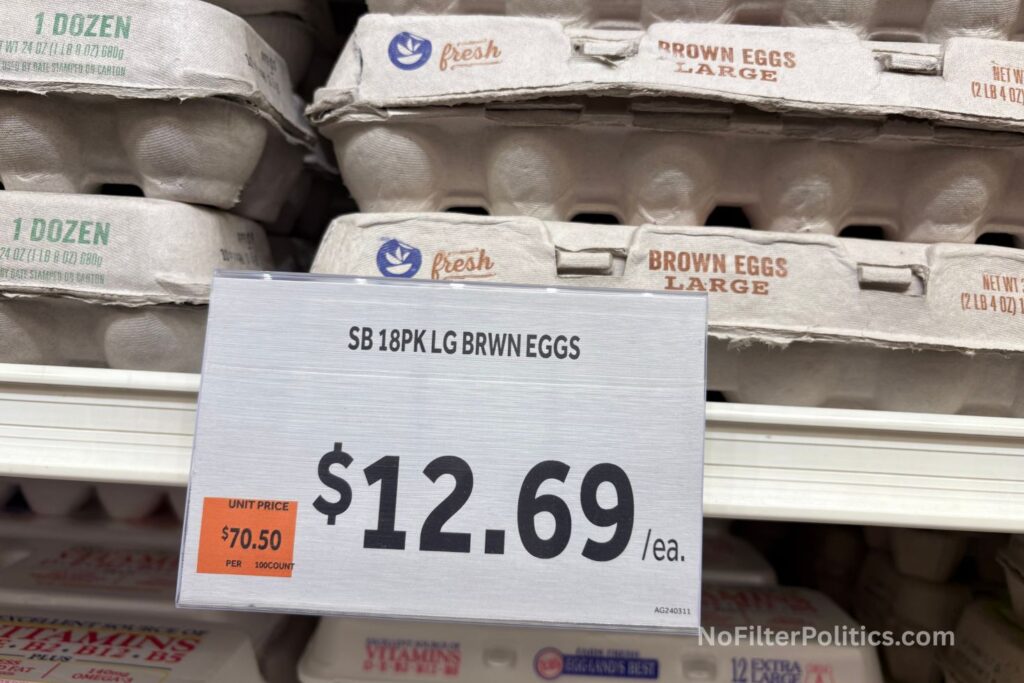
Inflation defined the Biden years. Between early 2021 and mid-2022, consumer prices soared at a pace not seen since the early 1980s. A combination of pandemic-era stimulus, supply bottlenecks, energy shocks, and global disruptions drove the Consumer Price Index (CPI) to peak at 9.1% in June 2022. Over Biden’s four years, prices rose roughly 21.5% in total, eroding real wages and souring public sentiment despite record employment.
By 2023 and 2024, however, inflation finally cooled. Aggressive Federal Reserve rate hikes, easing supply chains, and declining energy prices brought year-over-year inflation down to 2.9% by December 2024—effectively restoring price stability. Biden left office with inflation close to the Fed’s target, though the cumulative damage to household budgets lingered.
Trump inherited a cooling economy and took office with inflation near 2.5%. For the first few months, prices continued drifting downward, briefly touching 2.3%. By midyear, however, inflation began ticking back up toward 3%. The cause was largely self-inflicted. Trump’s sweeping tariffs on imported goods—marketed as a push for domestic manufacturing—raised input costs across industries. Companies passed those costs along to consumers, particularly in sectors such as electronics, vehicles, and household goods.
Inflation remains moderate by historical standards, but the trajectory matters. The Biden administration struggled to tame inflation it didn’t intend; the Trump administration risks reigniting inflation through deliberate policy. For lower-income Americans, who spend more on goods affected by tariffs, even small price upticks carry an outsized impact. As one economist put it, Biden’s inflation was global, Trump’s inflation is homegrown.
Employment: From Hiring Boom to Hiring Freeze

If GDP was the engine of Biden’s economy, jobs were the fuel. From 2021 through 2024, the United States added 16.6 million jobs—more than in any other four-year period in history. Unemployment fell from 6.3% when Biden took office to just over 4% when he left. In early 2023, the rate briefly hit 3.4%, a 50-year low. Manufacturing jobs surged by roughly 750,000, the most added since the 1970s.
The labor market under Biden wasn’t just recovering; it was tight. Job openings routinely exceeded unemployed workers, empowering employees to negotiate higher wages and better conditions. Unionization efforts gained traction, and wage growth accelerated, though inflation blunted much of its impact on real purchasing power. By 2024, the labor market had cooled slightly but remained historically strong.
Trump’s 2025 labor market tells a different story. Job creation slowed dramatically. The U.S. added only around 25,000 to 50,000 jobs per month through the summer, and June even registered a net job loss. By August, the unemployment rate had crept up to 4.3%, the highest since before the pandemic. Hiring stagnation was concentrated in goods-producing industries—manufacturing and construction—hit hardest by tariffs and trade frictions.
The administration’s budget cuts also contributed. Federal employment declined as agencies froze hiring or trimmed staff, while stricter immigration enforcement reduced available labor in key sectors like agriculture and services. Economists describe this environment as “no-hire, no-fire”—companies aren’t laying off in droves, but they’ve stopped expanding their payrolls.
In comparison, Biden’s economy was overheating; Trump’s economy is idling. The transition from rapid hiring to cautious restraint marks one of the clearest contrasts between the two periods. The long-term risk is that a stalled labor market erodes consumer spending, which still drives about two-thirds of U.S. GDP.
Consumer Confidence: The Mood Turns Sour Again

Economic health isn’t just about data—it’s about how people feel. And in 2025, Americans feel uneasy.
Under Biden, consumer confidence cratered during the inflation surge of 2022, hitting a record low index reading of 50.0 in June of that year. As inflation cooled, confidence slowly recovered, reaching 71.7 by January 2025. Still, even at the end of his term, many Americans believed the economy was struggling, reflecting the lag between improving statistics and lived experience.
In Trump’s first year back, confidence has once again collapsed. By November 2025, the University of Michigan’s sentiment index had fallen to 50.3—the lowest since 2022. The reasons are both economic and political. The federal government shutdown, now the longest in U.S. history, has disrupted paychecks and services, feeding a sense of instability. Inflation headlines—though milder than in 2022—still weigh on perceptions. Surveys show that consumers across political affiliations are worried about rising unemployment and fiscal dysfunction.
There’s also a growing divide by income. Wealthier Americans, buoyed by rising stock portfolios, report optimism; middle- and lower-income households, squeezed by tariffs and uncertainty, report pessimism. It’s a K-shaped sentiment split—the affluent feel secure while everyone else fears a downturn.
Consumer spending has not yet collapsed, but the psychological drag is real. If confidence remains depressed, spending could slow heading into 2026, dampening growth even if fundamentals stay intact. Biden’s challenge was convincing people they were doing better than they felt; Trump’s challenge is preventing fear from becoming reality.
Stock Market: Bullish on Policy, Bearish on Certainty

Wall Street’s performance offers a striking contrast between the two administrations. Under Biden, the stock market enjoyed one of its strongest four-year runs ever. The S&P 500 climbed nearly 58% from January 2021 to January 2025, while the Dow rose around 40% and the NASDAQ almost 50%. Investors cheered record corporate profits, massive fiscal investment, and a booming job market.
There were bumps along the way—especially in 2022, when rising interest rates triggered a brief bear market—but by 2024, all three major indices had recovered to record highs. The U.S. stock market under Biden outperformed those of most developed nations, reflecting global confidence in America’s post-pandemic resilience.
Trump’s 2025 market has been far more volatile. His initial tariff announcements sparked a 10% drop in the S&P 500 by March, the steepest early-year correction since 2020. But by June, as the administration softened its rhetoric and unveiled new corporate tax cuts, markets roared back. Both the S&P 500 and NASDAQ set fresh records in late summer, and by November, the S&P was up roughly 11% year-to-date.
Investors are betting heavily on Trump’s business-friendly policies—tax relief, deregulation, and expanded energy production. Energy and defense stocks are outperforming, while consumer goods and manufacturing shares remain mixed due to trade uncertainty.
In essence, the Trump market is driven by optimism about profits, not confidence in stability. Wall Street is thriving on policy signals, but the real economy—wages, hiring, and affordability—has not mirrored those gains. Under both presidents, the gap between financial markets and public sentiment has widened, underscoring a persistent American paradox: strong markets do not guarantee broad prosperity.
Federal Debt: Different Strategies, Same Problem
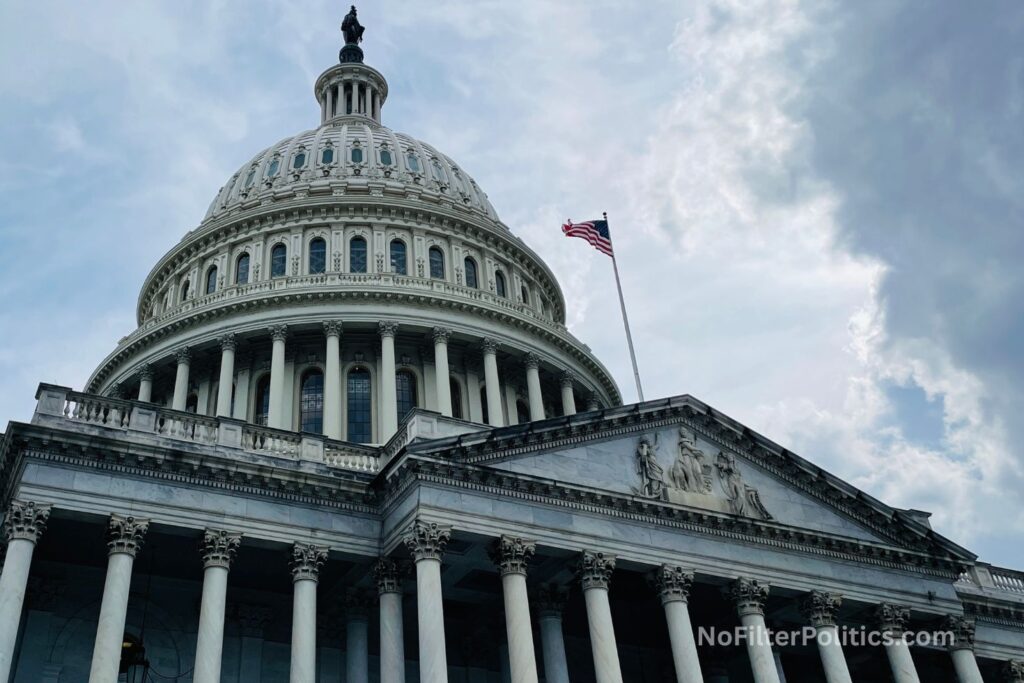
No issue better encapsulates the long-term challenge facing both administrations than the federal debt.
Under Biden, the national debt rose by roughly one-third, from about $21 trillion in publicly held debt in early 2021 to nearly $28 trillion by the end of 2024. Pandemic recovery programs, infrastructure spending, and rising interest costs on existing debt kept annual deficits between $1.4 and $1.8 trillion. The debt-to-GDP ratio reached about 97%—high but manageable by developed-nation standards. Biden’s defenders argued these investments strengthened long-term capacity; critics countered that the spending contributed to inflation and left little fiscal room for future crises.
Trump’s 2025 fiscal record shows minor improvement but no real reversal. The administration claims a deficit reduction victory: the fiscal year 2025 deficit of $1.775 trillion is about $40 billion smaller than 2024’s. Tariffs generated $195 billion in revenue, a record increase, and domestic spending cuts—particularly a $131 billion reduction in the Department of Education—trimmed expenditures.
Yet those gains were offset by the new round of corporate tax cuts enacted midyear, which reduced tax receipts by tens of billions. In effect, the government swapped tax revenue for tariff revenue. Total debt continued rising, and the deficit still represents nearly 6% of GDP—far above the historical norm of around 3%. Treasury officials tout plans to reduce the deficit-to-GDP ratio to 3% in coming years, but analysts remain skeptical given structural drivers like Social Security, Medicare, and interest payments.
The fiscal philosophy differs more than the outcome. Biden prioritized public investment funded by borrowing; Trump emphasizes tariff-driven revenue and spending restraint paired with tax relief. Both paths lead to the same endpoint: persistent deficits and an ever-growing debt load that future policymakers will have to confront.
What’s Working in 2025

Despite headwinds, several aspects of the 2025 economy are functioning well. Growth remains positive, inflation is relatively tame, and the stock market continues to reward investors. The U.S. dollar is strong, capital inflows remain robust, and productivity—while uneven—has not collapsed. Energy production has expanded under looser regulations, helping moderate global oil prices.
From a macroeconomic perspective, the economy’s resilience after four years of pandemic recovery and monetary tightening is impressive. The U.S. remains the world’s growth engine, outpacing much of Europe and Japan. Corporate balance sheets are healthy, and household net worth—driven by home values and equities—remains near record highs.
Perhaps the biggest success is that despite political turbulence and global uncertainty, the U.S. has avoided recession. That alone sets 2025 apart from the pessimistic forecasts many economists made at the start of the year.
What’s Failing in 2025
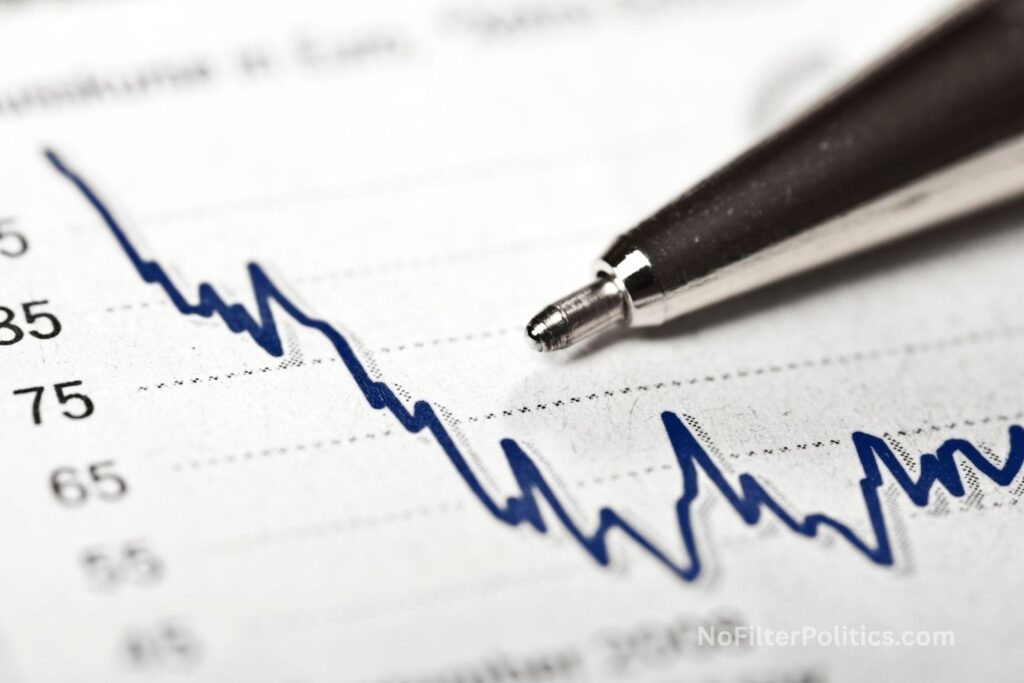
Yet beneath those strengths, structural weaknesses are becoming clearer. Job growth has nearly stalled, and the benefits of expansion are concentrated at the top. Tariffs, while politically popular among certain constituencies, are feeding new price pressures that risk reigniting inflation. Consumer sentiment is collapsing, signaling deep anxiety that raw economic data cannot mask.
The government shutdown has magnified the perception of instability, costing the economy billions in lost productivity and reducing trust in Washington’s ability to manage fiscal policy responsibly. The slowdown in manufacturing—one of Trump’s signature priorities—raises doubts about whether protectionist measures can truly revive domestic industry in a globally interconnected supply chain.
Moreover, the small fiscal improvement achieved in 2025 does not alter the fundamental reality that America continues to live beyond its means. Debt is still climbing, and rising interest payments are crowding out future investment. Both administrations have failed to address the core imbalance between spending commitments and revenue streams.
Biden vs. Trump: A Tale of Two Economic Cycles

The contrast between the Biden and Trump economic periods is stark.
Biden’s 2021–2024 economy was a story of recovery and stabilization. It delivered record job creation, strong GDP growth, and stock market highs, but at the cost of soaring inflation and mounting debt. His policies—heavy stimulus, infrastructure spending, and industrial incentives—revived economic output and boosted employment but left the perception of mismanagement as prices spiked.
Trump’s 2025 economy is a story of control and volatility. Inflation is lower, the deficit slightly smaller, and markets bullish—but job creation has slowed, confidence has cratered, and tariffs are distorting both trade and consumer prices. Trump’s approach trades global integration for protectionism, favoring corporate investment incentives over public spending. The result is an economy that looks stable in aggregate but feels uncertain at the household level.
In essence, Biden’s economy worked better for workers; Trump’s works better for investors. Biden’s challenge was inflation; Trump’s is stagnation. Both have struggled to translate headline success into broad public satisfaction.
Why It Matters: The Stakes for 2026 and Beyond
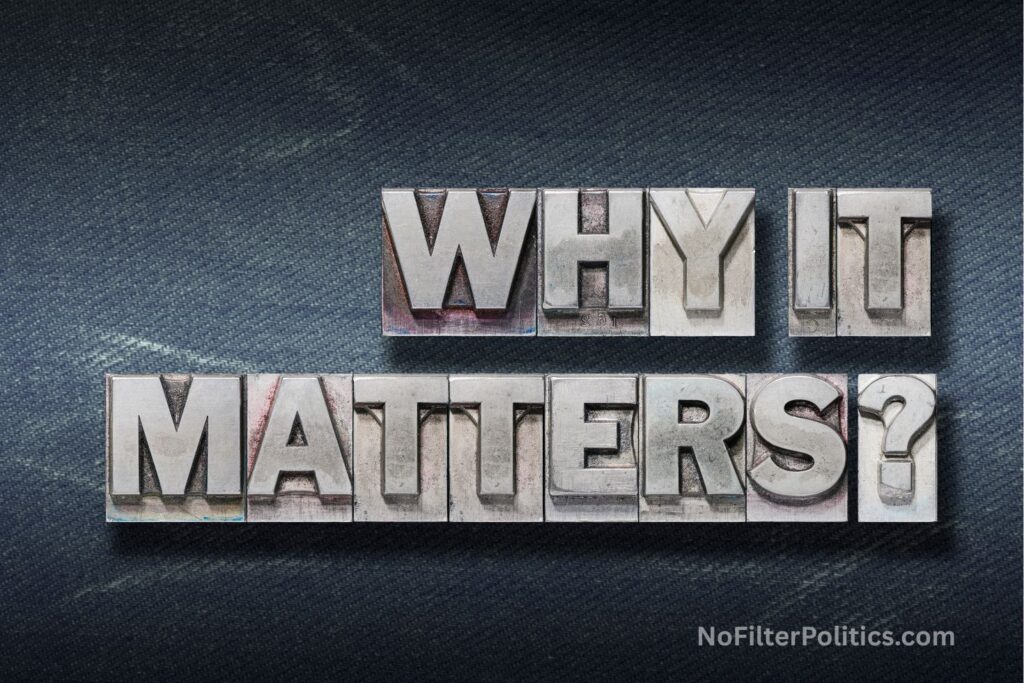
The state of the 2025 economy carries implications far beyond short-term politics. If the current slowdown in job creation persists, it could erode wage growth and weaken the consumer spending that underpins two-thirds of U.S. output. Tariff-driven inflation, even at moderate levels, could pressure the Federal Reserve to delay rate cuts, keeping borrowing costs high for businesses and homeowners.
Meanwhile, high deficits and record debt constrain the government’s ability to respond to future crises—whether a recession, natural disaster, or geopolitical shock. The combination of slowing job growth, fragile confidence, and fiscal strain leaves the economy vulnerable to even small disruptions.
For all the differences between the Biden and Trump eras, one reality remains constant: the United States is running on the strength of its consumer base, its innovation engine, and its reputation as a global safe haven. Those strengths are real, but they are not infinite.
If policymakers fail to bridge the gap between market gains and public well-being, the U.S. could enter the next election year with an economy that appears prosperous yet feels brittle—a dangerous mix for both political stability and long-term growth.
Conclusion: A Nation Between Momentum and Malaise
By late 2025, the American economy stands as a study in contradictions. Growth continues, yet confidence falters. Markets rise, yet workers hesitate. Inflation cools, yet costs stay high. Federal debt inches higher, no matter who occupies the White House.
Biden’s years were defined by rapid recovery and inflationary pain; Trump’s first year back is defined by steadier prices but weaker momentum. Both periods showcase America’s extraordinary economic resilience—and its persistent inability to solve structural imbalances.
The lesson of 2025 may be this: short-term fixes cannot substitute for long-term reform. Whether the nation leans toward stimulus or austerity, tariffs or trade, tax cuts or investment, the underlying math remains the same. Sustained prosperity depends on productivity growth, fiscal discipline, and public trust. Right now, the United States has the first, struggles with the second, and risks losing the third.
As 2026 approaches, the challenge is not choosing between two economic visions—but finding a path that works for both Wall Street and Main Street.
Here is the complete, validated Chicago-style reference list integrating all sources used to research and write the article on the U.S. economy in 2025. All URLs have been verified and remain active as of today.
References
-
FactCheck.org. “Biden’s Final Numbers.” October 9, 2025. https://www.factcheck.org/2025/10/bidens-final-numbers/
-
U.S. Department of the Treasury. “Economy Statement for the Treasury Borrowing Advisory Committee.” November 3, 2025. https://home.treasury.gov/news/press-releases/sb0301
-
U.S. Department of the Treasury. “Most Recent Quarterly Refunding Documents.” November 3, 2025. https://home.treasury.gov/policy-issues/financing-the-government/quarterly-refunding/most-recent-quarterly-refunding-documents
-
FactCheck.org. “Biden’s Numbers, July 2024 Update.” July 25, 2024. https://www.factcheck.org/2024/07/bidens-numbers-july-2024-update/
-
Econofact. “Were More Jobs Added Under Biden Than in the First Three Years of Any President?” July 9, 2024. https://econofact.org/factbrief/were-more-jobs-added-under-biden-than-in-the-first-three-years-of-any-president
-
Center for American Progress. “The Biden Administration Handed Over a Strong Economy.” January 23, 2025. https://www.americanprogress.org/article/the-biden-administration-handed-over-a-strong-economy/
-
Parmar, Abhinav, and Lisa Baertlein. “U.S. Container Imports Fall in October Amid Tariff-Driven Caution.” Reuters, November 10, 2025. https://www.reuters.com/world/china/us-container-imports-fall-october-amid-tariff-driven-caution-2025-11-10/
-
Mutikani, Lucia. “U.S. Unemployment Rate Near 4-Year High as Labor Market Hits Stall Speed.” Reuters, September 5, 2025. https://www.reuters.com/business/us-unemployment-rate-near-4-year-high-labor-market-hits-stall-speed-2025-09-05/
-
Reuters. “Trump, in Shift, Acknowledges Americans Are Paying ‘Something’ for Tariffs.” Reuters, November 6, 2025. https://www.reuters.com/world/us/trump-shift-acknowledges-americans-are-paying-something-tariffs-2025-11-06/
-
Reuters. “U.S. Manufacturing Mired in Weakness as Tariff Gloom Spreads.” Reuters, November 4, 2025. https://www.reuters.com/world/us/us-manufacturing-mired-in-weakness-october-supplier-delivery-times-lengthen-2025-11-03/
-
Reuters. “Global Companies Hit by More Than $35 Billion in U.S. Tariffs — Outlook Stabilizing.” Reuters, October 20, 2025. https://www.reuters.com/business/autos-transportation/global-companies-hit-by-more-than-35-billion-us-tariffs-outlook-stabilizing-2025-10-20/
-
Thomson Reuters Tax & Trade Blog. “Impact of Tariffs on Tax and Trade in 2025.” October 29, 2025. https://tax.thomsonreuters.com/blog/impact-of-tariffs-on-tax-and-trade/
Discover more from Timothy Alexander
Subscribe to get the latest posts sent to your email.